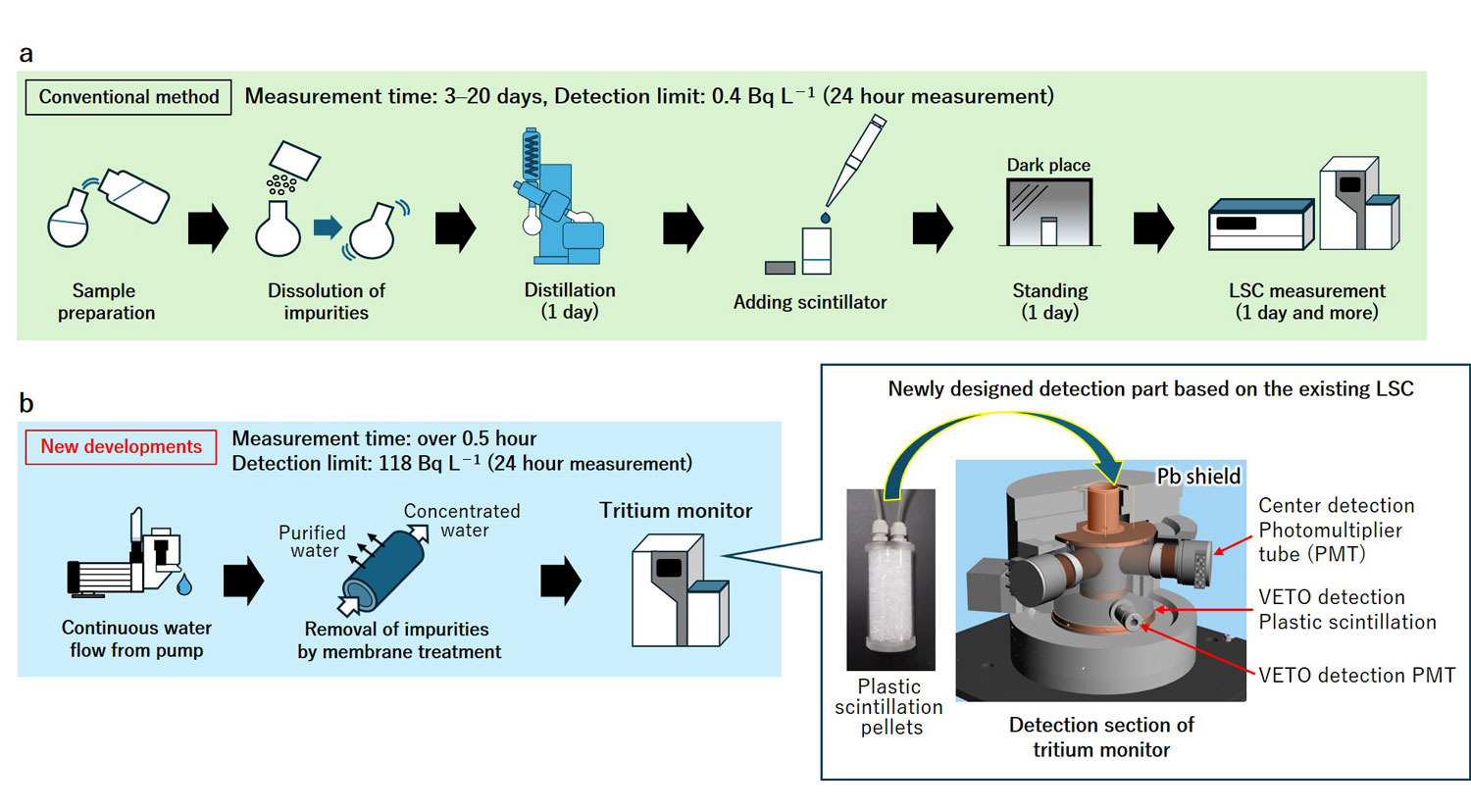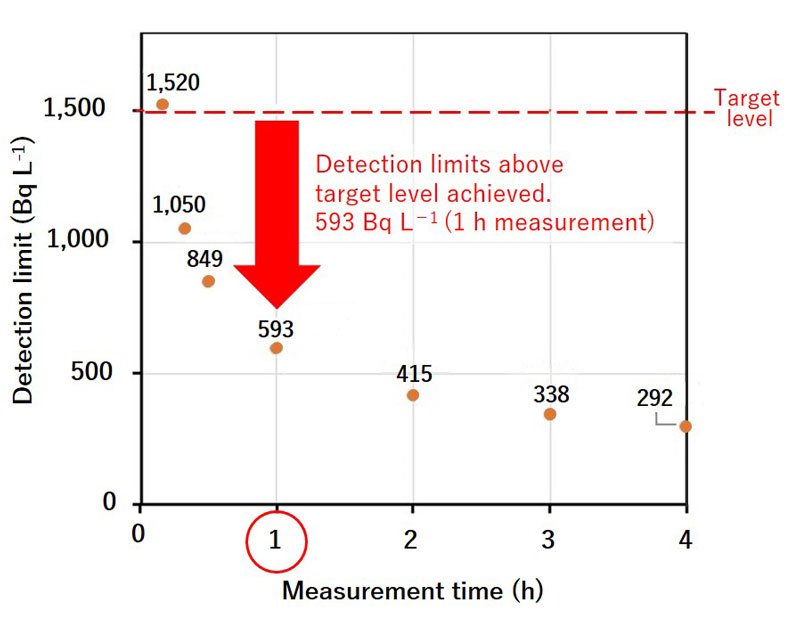Publication Date: April 23, 2025
Access counts:0
Rapid Determination of Tritium Concentration in Solution
-Development of a Practical Tritium Water Monitor for Continuous Measurement-

Fig. 1 (a) Liquid scintillation counter (Conventional method), (b) Tritium monitor (New developments)

Fig. 2 Detection limit of the tritium monitor
As a part of the works for TEPCO’s Fukushima Daiichi Nuclear Power Station (FDNPS) decommissioning, the release of water treated by the Advanced Liquid Processing System (ALPS) to the sea began in 2023. Continuous monitoring of the water is necessary to ensure that the tritium concentration in the ALPS-treated water does not exceed the standard value of 1,500 Bq L−1. The conventional measurement method uses a liquid scintillation counter (LSC) as a monitor. This process encounters some problems such as the need for a time-consuming pretreatment process and generation of waste liquid due to the use of organic solvents in the scintillator. We developed a practical tritium monitor to continuously supervise the tritiated water concentration in ALPS-treated water. The monitor comprises a flow cell detector consisting of plastic scintillation pellets, a coincidence circuit composed of three photomultiplier tubes (PMT), lead shielding designed to mitigate the impact of environmental gamma radiation, and a VETO detector. By employing a plastic solid scintillator, we developed a detector that enables measurements without requiring a pretreatment process and without generating organic waste liquid. In addition, a low background dose rate (0.082 cps) was achieved by adding a shielding structure and background subtraction function for conducting measurements in environments, such as the FDNPS, with relatively high ambient dose rates.
This system is designed to allow continuous measurement by pumping water through it. In this test, the lower detection limit of 593 Bq L−1 was achieved within a short measurement time of one hour, without the need for a complicated pretreatment process. This value is well below the release standard of 1,500 Bq L−1 for ALPS treated water.
If you have any comments or feedback about this page, please click the button to share your thoughts with us.
